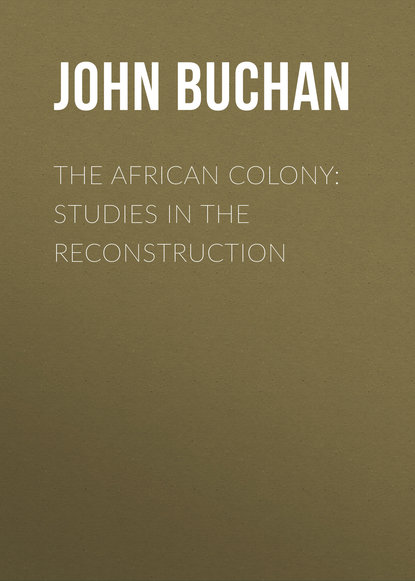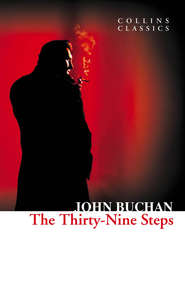По всем вопросам обращайтесь на: info@litportal.ru
(©) 2003-2024.
✖
The African Colony: Studies in the Reconstruction
Настройки чтения
Размер шрифта
Высота строк
Поля
Zeerust is a type of the curious truncated Boer nomenclature, being a corruption of Coetzee’s Rust.
12
In other parts of British Africa the policy of reserves has received full recognition. In East Africa there are two large reserves, one along the Uganda Railway and the other near Lake Rudolf. In the Soudan there is a vast reserve between the Blue and the White Niles, and most of the best shooting-ground throughout the country is strictly protected.
13
The eland is the one conspicuous exception.
14
A Transvaal friend informs me that my classification, though the one commonly in use, is quite inaccurate. The yellow-fish and the white-fish are not carp but species of barbel, and what I have called barbel is another variant of the same family, called by the Dutch “kalverskop,” or “calf’s-head,” from its shape. There is no true carp, though the Dutch give the name of “kurper” to a very curious little fish about four inches long which is common in streams flowing into the Vaal. The other chief varieties are the coarse mud-fish and the cat-fish, which latter is often mixed up with the barbel. It is to be hoped that some local ichthyologist will give his attention to the native fishes – a very interesting subject, and one at present in the most unscientific confusion.
15
The latest information available on the subject of the Transvaal gold mines will be found in the exhaustive report prepared for Mr Chamberlain by the mining engineers, and published at Johannesburg in 1903.
16
The following are some of the working costs of the mines. Low costs: Geldenhuis Deep, 22s.; Geldenhuis Select, 17s. 6d.; Geldenhuis Main Reef, 17s. 4d.; Meyer and Charlton, 18s. 2d.; Simmer and Jack, 20s. 7d. High costs: City and Suburban, 29s. 1d.; Bonanza, 27s. 6d.; Robinson Deep, 30s. 2d. The Robinson-Randfontein group have ore of a gold value of 34s. 9d. per ton, and a profit of 2s. over the working cost. The Bonanza has ore worth £5 a-ton.
17
Imported labour reduces itself in practice to Chinese or Japanese. Even supposing that the Indian Government consented to the strict form of indenture necessary for mining purposes, the political danger of introducing coolie labour into a country which already contains a considerable coolie population would be very great.
18
An argument often used in this connection is that the employment of Asiatic labourers, repatriated at the end of their contract, would mean that a very large sum of money annually left the country. But the same thing will happen if native African labour is brought from Central or Western Africa or Somaliland. It is happening at present with the natives from Portuguese territory, who form 90 per cent of the existing labour-supply.
19
I have said elsewhere that there are few South African problems which are not long-descended. The first proposal to introduce Chinese labour was made by Jan van Riebeck, the first Governor of Cape Colony, about the year 1653. He urged the scheme with great persistence, but home opinion proved too strong for him.
20
The cost of the acquisition of the present railway systems was roughly 14 millions. This does not, of course, represent an accurate statement of capital outlay, as in the Orange Free State considerable sums were spent out of State revenue. But even if we put the figure at the outside limit of 20 millions, the net profits are still more than 10 per cent of the capital value.
21
This figure does not cover the expense of repatriation. There was a free gift for the purpose of £5,000,000 by the Imperial Government.
22
The Council is composed of the High Commissioner and Governor (President), the two Lieutenant-Governors, the Commissioner of Railways, the Inspector-General of the South African Constabulary, two official members for each colony, nominated by the Lieutenant-Governors, two unofficial members for each colony, elected by the unofficial members of the two legislatures, and two members nominated by the Secretary of State.
23
These figures require a word of explanation. Only 30 millions of the loan have been issued, so the charge for interest and management should only be £1,208,000; but as the loan year began in May and the financial year for the budget began in July, interest and management charges for fourteen months were included.
24
A Fencing Act, a Stock-Route Act, and a Brands Act on the most progressive lines have been prepared for the Transvaal. An excellent Fencing Act, badly administered, has always existed in the Orange River Colony, and a Brands Act, inferior to the Transvaal measure, has been passed in that colony. But it is the effective administration of the Acts which is of importance.
25
Parliamentary Paper C.D. 1163.
26
My friend, Colonel Owen Thomas, had some samples of Transvaal soil analysed, and the report was very discouraging. To set against this, a sample of Springbok Flats soil was pronounced by a distinguished English expert, to whom it was sent, to be one of the richest specimens of virgin soil he had seen.
27
Bryce, Impressions of South Africa, 3rd edition, p. 451.
28
It is proposed to assimilate native taxation in Southern Rhodesia to the system now in vogue in the Transvaal, and impose a poll tax of £2, with a tax of 10s. for each extra wife. In the Orange River Colony it is proposed to raise the hut tax to £1.
29
The question of native ownership of land in the new colonies is not very clear. In the Transvaal land was generally held in trust for natives by the Native Commissioners; but apparently half-castes could own land, and Asiatics under certain restrictions. In the Orange River Colony ownership by Asiatics is forbidden; but certain native tribes, such as the Barolongs in Maroka, and the Oppermans at Jacobsdaal, as well as half-castes and the people known as the Bastards, were allowed freehold titles, subject to certain restrictions on alienation.
30
Mr Bryce, in his ‘Studies in History and Jurisprudence,’ vol. i. pp. 430-467, has a valuable examination of the old Transvaal and Orange River Colony constitutions.
31
Stray dogmas from the French Revolution had undoubtedly some share in the ferment preceding the Great Trek, but I cannot think that the voortrekkers carried any such baggage with them to the wilderness.
32
The original Grondwet declared that no Roman Catholic Church, nor any Protestant Church which did not teach the Heidelberg Catechism, should be admitted within the Republic.
33
There was no reason in law under the old Orange Free State Government why a native should not have the municipal franchise through ownership, and an Asiatic through occupation of town property. But in practice – a practice deduced from the spirit of the Constitutie– no such voters were registered.
34
American Commonwealth, vol. i. p. 465.
35
The grounds of Australian federation are a useful parallel for South Africa. I give Mr Bryce’s list (‘Studies in History and Jurisprudence,’ vol. i. p. 478): “The gain to trade and the general convenience to be expected from abolishing the tariffs established on the frontiers of each colony; the need for a common system of military defence; the advantages of a common legislature for the regulation of railways and the fixing of railway rates; the advantages of a common control of the larger rivers for the purposes both of navigation and irrigation; the need for uniform legislation on a number of commercial topics; the importance of finding an authority competent to provide for old-age pensions and for the settlement of labour disputes all over the country; the need for uniform provision against the entry of coloured races (especially Chinese, Malays, and Indian coolies); the gain to suitors from the establishment of a High Court to entertain appeals and avoid the expense and delay involved in carrying cases to the Privy Council in England; the probability that money could be borrowed more easily on the credit of the Australian Federation than by each colony for itself; the stimulus to be given to industry and trade by substituting one great community for six smaller ones; the possibility of making better arrangements for the disposal of the unappropriated lands belonging to some of the colonies than could be made by those colonies for themselves.”
36









